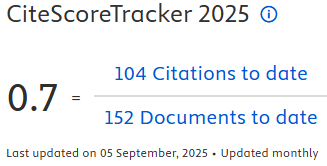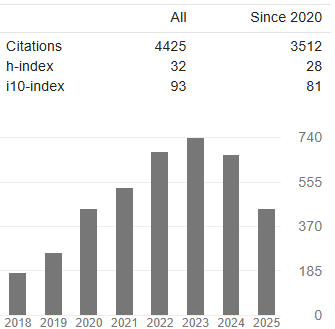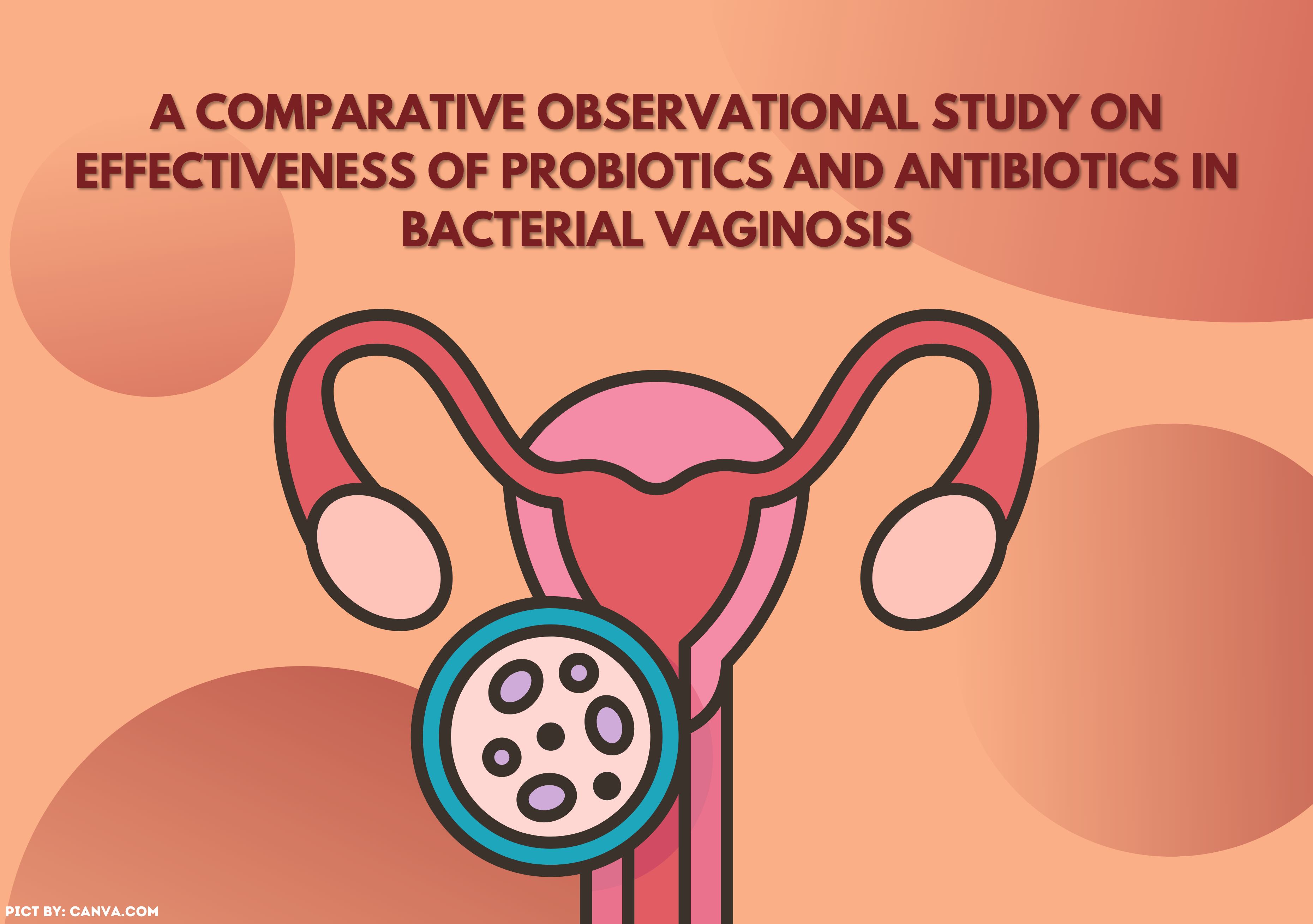FACTORS ASSOCIATED WITH NUTRITIONAL STATUS OF CHILDREN UNDER FIVE YEARS OF AGE IN GUNUNGSITOLI IDANOI PRIMARY HEALTHCARE CENTER
Downloads
The number of children under five years of age suffering from underweight was 28.0% in Gunungsitoli district. Out of six primary Healthcare centers in the district, Gunungsitoli Idanoi Primary Healthcare Center Healthcarewas one of the six primary healthcare centers with the highest malnutrition prevalence. Sixty-four children under five years of age there Healthcaresuffered from malnutrition. This study aimed to identify factors associated with the nutritional status of children under five in Gunungsitoli Idanoi Primary Healthcare Center, Gunungsitoli district. It was an analytical survey with a cross-sectional approach conducted in Gunungsitoli Idanoi Primary Healthcare Center in February 2019. Data were collected using a questionnaire. This study had samples as many as 246 mothers of children under five years of age selected using a purposive random sampling technique. The bivariate analysis indicates the nutritional status of children under five was significantly associated with mother's employment status (p=0.043) and family size (p=0.015). While the nutritional status of children under five had no significant association with mother's knowledge of nutrition (p=0.485), mother's education (p=0.616), family income (p=0.511), infectious disease (p=0.913), and history of breastfeeding (p=0.847). Mother's employment status and family size affected the nutritional status of children under five. The primary Healthcare center should cooperate with stakeholders across sectors, especially conduct training for improving economic business skills of the people in the village, and promote family planning program for couples of childbearing age.
Keywords: Breastfeeding, children under five years of age, underweight, mother's knowledge, mother's employment.
Adriani, M., & Wirjatmadi, B. (2014). Gizi dan Kesehatan Balita. Jakarta: PRENAMEDIA GROUP.
Andriani, R., Wismaningsih, E. R., & Indrasari, O. R. (2015). Hubungan Pemberian ASI Eksklusif dengan Kejadian Status Gizi Kurang pada Balita Umur 1-5 Tahun. Jurnal Wiyata, 2(1), 44–47.
Apriliana, W. F., & Rakhma, L. R. (2017). Faktor-faktor yang berhubungan dengan Status Gizi Balita yang mengikuti TFC di Kabupaten Sukoharjo. Media Publikasi Penelitian, 15(1), 1–8.
Arum, R., Rahfiludin, M. Z., & Nugraheni, S. A. (2017). Faktor-faktor yang berhubungan dengan terjadinya Gizi Kurang pada Anak Balita Usia 24-59 Bulan (Studi di Wilayah Kerja Puskesmas Halmahera Kota Semarang Tahun 2017. Jurnal Kesehatan Masyarakat, 5(3), 175–185.
Asih, Y., & Risneni. (2016). Asuhan kebidanan Nifas dan Menyusui. Jakarta: CV. Trans Info Media.
Handayani, R. (2017). Faktor-faktor yang berhubungan dengan Status Gizi pada Anak Balita. Journal Endurence, 2(2), 217–224. https://doi.org/10.22216/jen.v2i2.1742
Hockenberry, M. J., & Wilson, D. (2015). Wong's Nursing Care of Infants and Children (10th ed.). St. Louis: Elsevier.
Karundeng, L. R., Ismanto, A. Y., & Kundre, R. (2015). Hubungan Jarak Kelahiran dan Jumlah Anak dengan Status Gizi Balita di Puskesmas Kao Kecamatan Kao Kabupaten Halmahera Utara. EJournal Keperawatan (e-Kep), 3(1), 1–9.
Indonesian Ministry of Health. (2015). Rencana Strategis Kementrian Kesehatan Tahun 2015-2019. Jakarta: Kementrian Kesehatan RI.
Indonesian Ministry of Health. (2018). Buku Saku Pemantauan Status Gizi Tahun 2017. Jakarta: Kementrian Kesehatan RI.
Khotimah, H., & Kuswandi, K. (2014). Hubungan Karakteristik Ibu dengan Status Gizi Balita di Desa Sumur Bandung Kecamatan Cikulur Kabupaten Lebah Tahun 2013. Jurnal Obstretika Scientia, 2(1), 146–162.
Kowureng, F. C., Kapantow, N. H., & Punuh, M. I. (2018). Hubungan antara Riwayat Pemberian ASI dengan Status Gizi pada Anak Usia 24-59 Bulan di Wilayah Kerja Puskesmas Touluaan Kabupaten Minahasa Tenggara. Jurnal Kesmas, 7(4).
Lestari, P., Sarbini, D., & Rakhma, L. R. (2015). Hubungan Pengetahuan dan Sikap Ibu tentang Makanan Balita di Desa Malangjiwan, Kecamatan Colomadu, Kabupaten Karanganyar.
Mahmood, S., Nadeem, S., Saif, T., Mannan, M., & Arshad, U. (2016). Nutritional Status and Associated Factors in Under-five Children of Rawalpindi. J Ayub Med Coll Abbottabad, 28(1), 67–71.
Munawaroh, S. (2015). Pola Asuh mempengaruhi Status Gizi Balita. Jurnal Keperawatan, 6(1), 44–50. https://doi.org/10.22219/jk.v6i1.2851
Ningrum, A. S. (2014). Hubungan Pemberian ASI Eksklusif dengan Status Gizi Balita Usia 12-59 Bulan di Posyandu Dewi Sartika Candran Sidoarum Sleman.
Par'i, H. M. (2014). Penilaian Status Gizi. Jakarta: EGC.
Pawenrusi, E. P. (2016). Factors Related to the Nutritional Status of Children in Area Served by the Pattingalloang Health Center, Makassar. Pakistan Journal of Nutrition, 15(4), 333–336. https://doi.org/10.3923/pjn.2016.333.336
Pratiwi, R. H., Suyatno, & Aruben, R. (2015). Faktor-faktor yang berhubungan dengan berat-kurang (Underweight) pada Balita di Perkotaan dan Perdesaan Indonesia berdasarkan Data Riskesdas Tahun 2013. Jurnal Kesehatan Masyarakat3, 3(2), 127–137.
Putri, F. R., Sulastri, D., & Lestari, Y. (2015). Faktor-faktor yang berhubungan dengan Status Gizi Anak Balita di wilayah kerja Puskesmas Nanggalo Padang. Jurnal Kesehatan Andalas, 4(1), 254–261.
Ratufelan, E., Zainuddin, A., & Junaid. (2018). Hubungan Pola Makan, Ekonomi Keluarga dan Riwayat Infeksi dengan Kejadian Gizi Kurang pada Balita di wilayah kerja Puskesmas Benu-benua Tahun 2018. Jurnal Ilmiah Mahasiswa Kesehatan Masyarakat, 3(2), 1–13.
Rohimah, E., Kustiyah, L., & Hernawati, N. (2015). Pola Konsumsi, Status Kesehatan dan hubungannya dengan Status Gizi dan Perkembangan Balita. J. Gizi Pangan, 10(2), 93–100. https://doi.org/10.25182/jgp.2015.10.2.%25p
Rumende, M., Kapantow, N. H., & Punuh, M. I. (2018). Hubungan antara Status Sosial Ekonomi di Kecamatan Tombatu Utara Kabupaten Minahasa Tenggara. Jurnal Kesmas, 7(4).
Salmah, S. (2018). Pengantar Ilmu Kesehatan Masyarakat. Jakarta: CV. Trans Info Media.
Sholikah, A., Rustiana, E. R., & Yuniastuti, A. (2017). Faktor-faktor yang berhubungan dengan Status Gizi Anak Balita di Pedesaan dan Perkotaan. Public Health Perspective Journal, 2(1), 9–18.
Supariasa, I. D. N., Bakri, B., & Fajar, I. (2016). Penilaian Status Gizi (Edisi 2). Jakarta: EGC.
Suryani, L. (2017). Faktor yang mempengaruhi Status Gizi Balita di wilayah kerja Puskesmas Payung Sekaki Pekanbaru. Journal of Midwifery Science, 1(2), 47–53.
The World Bank. (2018). Prevalence of Underweight, Weight for Age. The World Bank Group.
UNDP. (2018). The Sustainable Development Goals.
UNICEF. (2018). Malnutrition rates remain alarming: stunting is declining too slowly while wasting still impacts the lives of far too many young children.
WHO. (2017). Children: reducing mortality.
- The authors agree to transfer the transfer copyright of the article to The Indonesian Journal of Public Health effective if and when the paper is accepted for publication.
- Authors and other parties are bound to the Creative Commons Attribution-NonCommercial-ShareAlike 4.0 International License for the published articles, legal formal aspect of journal publication accessibility refers to Creative Commons Attribution-NonCommercial-ShareAlike 4.0 International License (CC BY-NC-SA), implies that:
- Attribution ” You must give appropriate credit, provide a link to the license, and indicate if changes were made. You may do so in any reasonable manner, but not in any way that suggests the licensor endorses you or your use.
- NonCommercial ” You may not use the material for commercial purposes.
- ShareAlike ” If you remix, transform, or build upon the material, you must distribute your contributions under the same license as the original.































